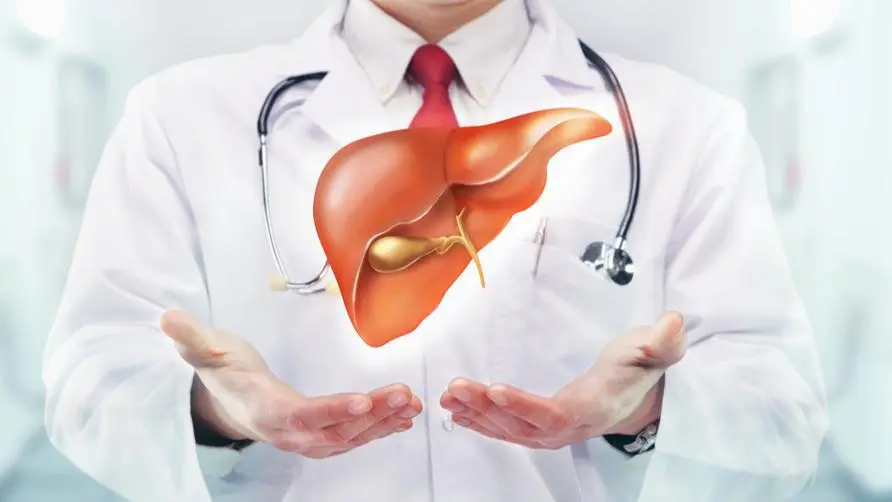Diagnosed after having fever for 2 months! Doctors reveal 6 symptoms of lymphoma: Don't ignore night sweats, fatigue, and swollen lymph nodes

Fever for 2 months with no reason found. Six major symptoms of lymphoma that you should be careful about.
“Some patients have inexplicable fevers for which no reason can be found, and it is only after 2 or 3 months that they are diagnosed with lymphoma!” Dr. Ke Bosheng, chairman of the Blood and Marrow Transplantation Society of Taiwan, said that lymphoma may not have obvious signs of masses, and cancer cells may It enters the bone marrow and liver and exists in the form of “infiltration”. When the six major symptoms of “swelling, fever, sweating, cough, weight loss, and tiredness” occur, you should seek medical examination in time.
Dr. Ke Bosheng pointed out that benign “lymph hyperplasia” may form obvious lymph nodes in the neck. It is common in lymph node enlargement following colds and fevers. The lymph nodes usually disappear after a period of time, and 80% of the cases are benign. However, you should pay special attention if you have swollen lymph nodes, fever exceeding 38°C lasting for more than 2 weeks, night sweats, weight loss, or increased fatigue.
What are the risk factors for lymphoma? How to treat after diagnosis?
Dr. Ke Bosheng said that there are between 40 and 50 subtype combinations of lymphoma, and the age group at which it occurs is not consistent. Overall, the risk increases with older age, but there are also some lymphoma subtypes that are more likely to occur in younger people. Lymphoma can be divided into “non-Hodgkin’s lymphoma” and “Hodgkin’s lymphoma”. According to epidemiological data in Taiwan, the former accounts for about 90% and the latter accounts for about 10%.
The cause of non-Hodgkin’s lymphoma is unclear, but it may be related to aging, viral or bacterial infection, genetics, autoimmune disease, etc. More research is needed to identify local risk groups. Based on published literature in Taiwan and abroad, it is inferred that advanced age, a history of hepatitis C, family history of lymphoma, autoimmune diseases, HIV patients, overweight BMI, and Helicobacter pylori patients may have a higher incidence rate.
Dr. Ke Bosheng pointed out that after diagnosis of lymphoma, the first priority is to classify the disease. Lymphoma types can be divided into “mild” and “aggressive”. Mild lymphoma is less dangerous and can be tracked for a long time. Invasive lymphocytes must undergo systemic treatment. Existing treatments include chemotherapy, targeted therapy, radiation therapy, allogeneic transplantation, autologous transplantation, and cell therapy.
Genetic engineering helps immune cells add locks to overcome immune escape of cancer cells
“Non-Hodgkin’s lymphoma” is the most common type of “diffuse large B-cell lymphoma” with a higher degree of malignancy, accounting for about 50%. The course of the disease usually develops rapidly and violently. If not controlled in time, it may take several months. It causes life threats. Today’s cell therapy can significantly improve the therapeutic effect of diffuse large B-cell lymphoma through genetic modification engineering.
Dr. Ke Bosheng explained that cell therapy can be divided into regenerative medicine and immunotherapy. Immunotherapy mostly involves extracting autoimmune cells, cultivating the ones that can fight tumors in large quantities, and then returning them to the patient’s body to win by quantity. However, cancer cells will also develop corresponding immune escape mechanisms, leading to a decrease in the effectiveness of cell therapy.
Therefore, another approach is to install genes on immune cells that can lock mutated cells and equip the immune army with an automatic targeting system. Dr. Ke Bosheng explained that after extracting cells and adding chimeric antigen receptor (CAR) through genetic engineering, it can identify cancer cell antigens, quickly activate the immune system, and overcome the immune escape mechanism of cancer cells. It is currently used in the treatment of diffuse tumors. For B-cell lymphoma, the treatment effect is increased by more than 30%, and the effect is remarkable.
Dr. Ke Bosheng reminds that the symptoms of lymphoma are sometimes easily confused with aging and chronic fatigue problems. If you feel that you have the six major symptoms of swelling, fever, sweating, coughing, weight loss, and tiredness, and you cannot find a specific cause, you must seek medical examination as soon as possible to avoid neglecting lymph nodes. Cancer warning.
Further reading:





